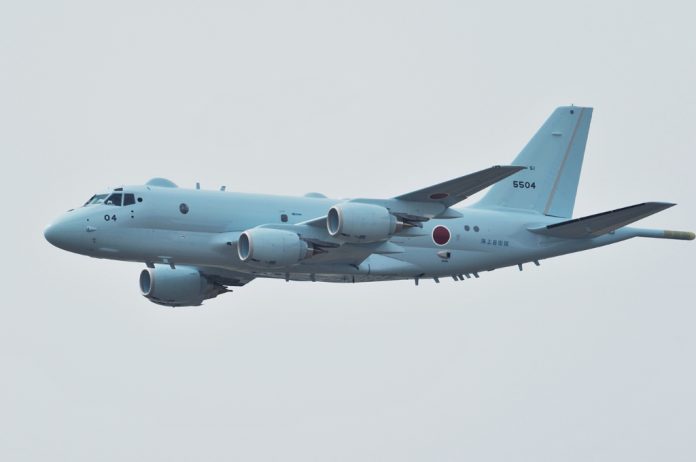This month a Kawasaki Heavy Industries executive met on a condition of anonymity with asianmilitaryreview.com and provided an update on the company’s P-1 maritime patrol aircraft and C-2 transport aircraft programmes.
The Japanese Maritime Self Defence Force has a programme of record for about 70 P-1 maritime patrol aircraft. The aircraft’s original equipment manufacturer Kawasaki Heavy Industries will complete the delivery of 13 P-1s by the end of April 2017 to its naval customer, the company executive disclosed. Cutting-edge technology used to equip this aircraft includes its Toshiba HPS-106 X-band (8.5-10.68 gigahertz) airborne surveillance radar, Fujitsu HAQ-2 Forward Looking Infrared equipment, Mitsubishi Electric HYQ-3 combat direction system and HLR-109B electronic support measure from the same company.
The executive also noted the pace of activities is quickening for a second major company programme, the C-2 transport aircraft. This March, The Japanese Air Self Defence Force awarded the Kawasaki C-2 its military certification rating, and the executive confirmed that three C-2s had been delivered to date: “KHI is aware of no fixed amount of C-2s the air force will require,” they continued: “to the best I know this will be about 20 to 30.” The JASDF is replacing its ageing circa 22 Kawasaki C-1s with C-2s, the latter being the largest freighters in service with the JASDF, supplying the service with expanded mission options. For instance, the C-2 provides much greater range than the platforms it is replacing, with distances achievable of up to 3080 nautical miles (5700 kilometres) when carrying its maximum payload of 30 tonnes.
Asked if Kawasaki was pursuing export opportunities for the P-1 and C-2, the executive responded “Yes,” but with two important caveats. Firstly, foreign sales are being pursued, “in cooperation with the Japanese government in order to primarily expand Japanese security.” Secondly, while Kawasaki and the Japanese government are actively pursuing specific, overseas programme opportunities for P-1 and C-2, these efforts could not be further revealed. Finally, executive was asked if there remained opportunities for non-Japanese businesses to join his company-led industry teams for the two programmes: “Yes, we do not shut the door to anybody,” he concluded.













